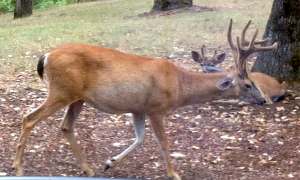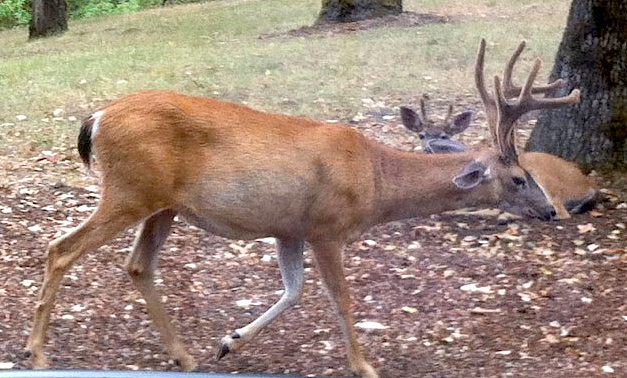Tests have confirmed that deer in the Roseburg area are dying from Epizootic Hemorrhagic Disease (EHD), a disease that has not been seen in deer in this area of Oregon before.

Lab results from Oregon State University’s Veterinary Diagnostic Lab tested positive for EHD late last week. This year, more than 100 deer have died in the Roseburg area with similar symptoms. Most of the deer were found in the Fisher Road area west of Roseburg or near Umpqua Community College.
EHD is transmitted to deer via the bites of Culicoides gnats (no-see-ums). Columbian white-tailed deer are particularly susceptible but it can affect black-tailed deer as well. Both a black-tailed deer and a Columbian white-tailed deer collected in the Roseburg area tested positive for EHD. Additional samples of other deer found dead are being tested.
ODFW wildlife veterinarian Colin Gillin said EHD symptoms resemble those of the more common Adenovirus Hemorrhagic Disease (AHD). EHD causes weakness, excessive salivation and bloody diarrhea. Deer with EHD also develop a rapid pulse and respiration rate and fevers – which is why they are frequently found lying in bodies of water to reduce their body temperature. Deer finally become unconscious and die.
“We have never seen EHD before in this area, and it’s a new threat to deer,” said Tod Lum, Umpqua District wildlife biologist. “Low water conditions and pools of stagnant water along the rivers provide ideal breeding conditions for the gnats that transmit EHD. There isn’t much we can do to prevent this disease other than wait for the rains to come or cold temperatures to knock back the gnats.”
Lum still recommends people stop feeding deer or providing them with water so as not to artificially concentrate them in a small area. Also, clean water troughs, fountains and bird baths if deer are using them.
“These steps will help reduce the risk of disease spreading,” Lum said. There have also been reports of more than 200 dead deer in Jackson and Josephine counties. Samples from those deer tested positive for the more common AHD, which is spread through nose to nose contact. Because EHD is transmitted through gnats, livestock can also be affected.
“Domestic livestock can certainly be exposed to the virus, but our experience with EHD shows cattle and sheep rarely exhibit clinical signs,” says Dr. Brad LeaMaster, State Veterinarian with the Oregon Department of Agriculture. “A very small percentage of animals can develop symptoms that can include fever, loss of appetite, lameness, ulcers and crusty sores on the nose, mouth and teats. There is no vaccine for EHD in cattle.”
Currently, archery deer hunting and some controlled deer hunts are open in southwest Oregon and any hunter who harvests a sick deer should also contact ODFW.
EHD cannot spread to people from animals. Anyone who sees a sick deer in the Roseburg area should call the Roseburg ODFW office at 541-440-3353 or the Wildlife Health Hotline at 1-866-968-2600.
DEAL OF THE DAY: Sellouts! Closeouts! Get Great Hunting Stuff for Great Hunts!

